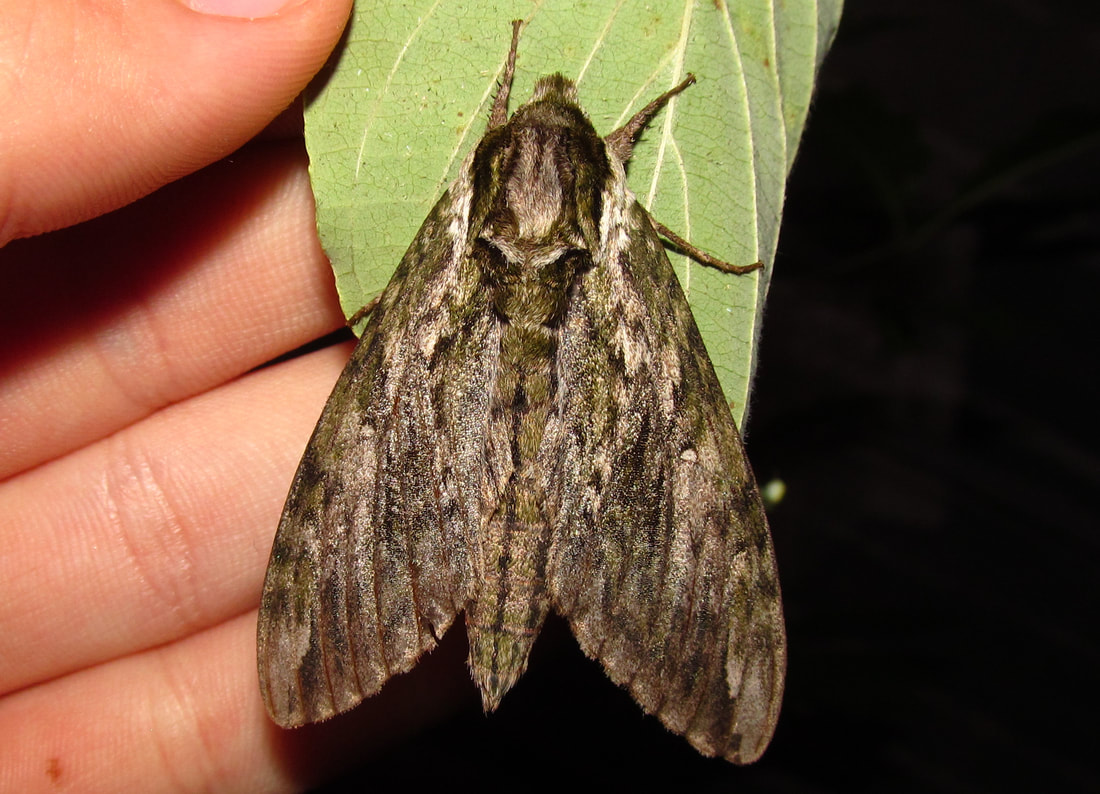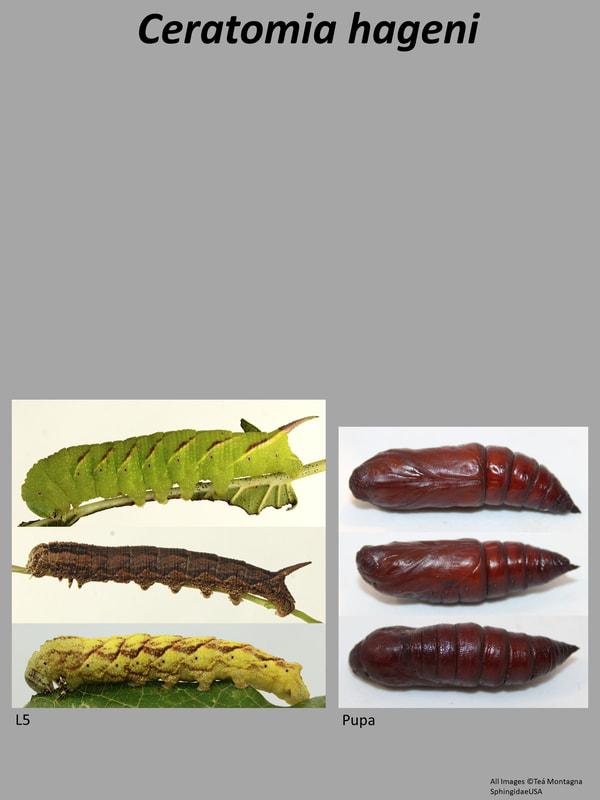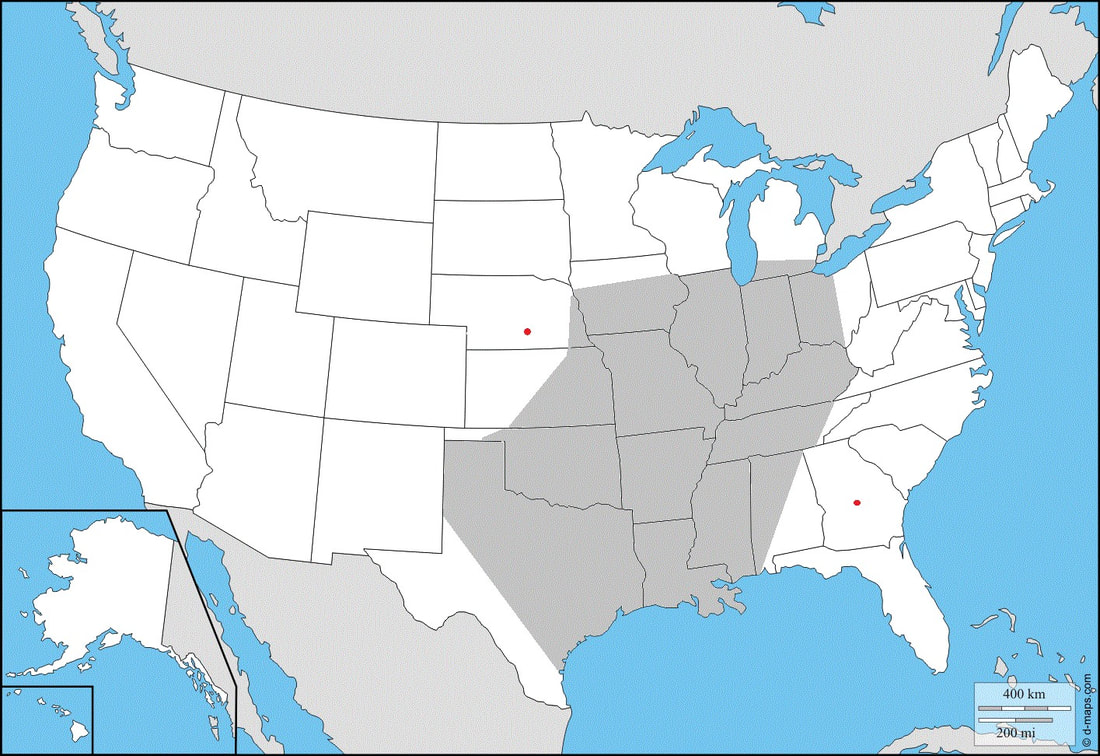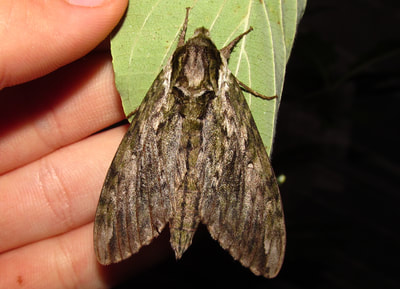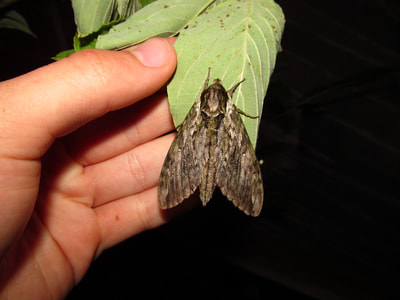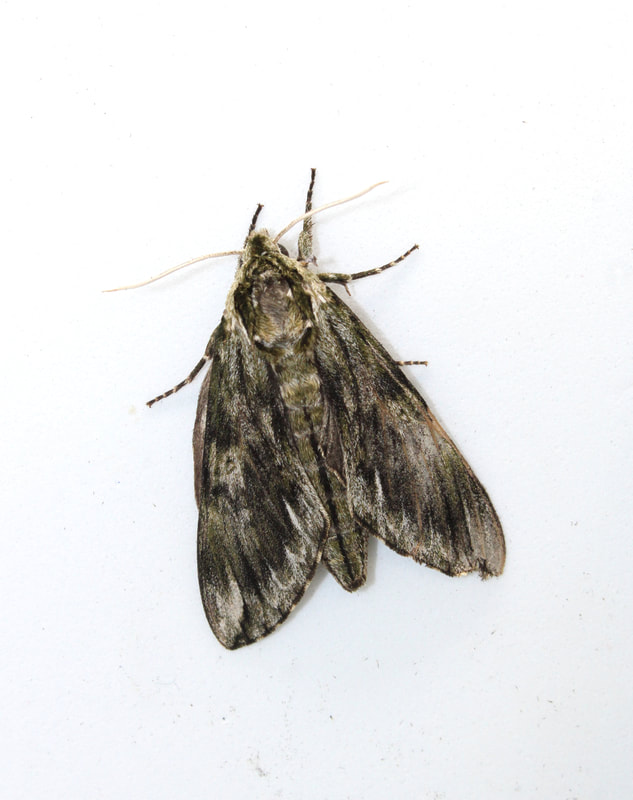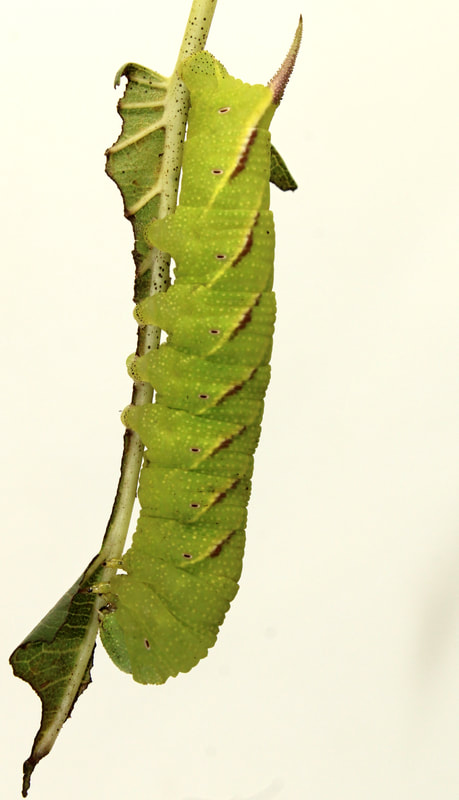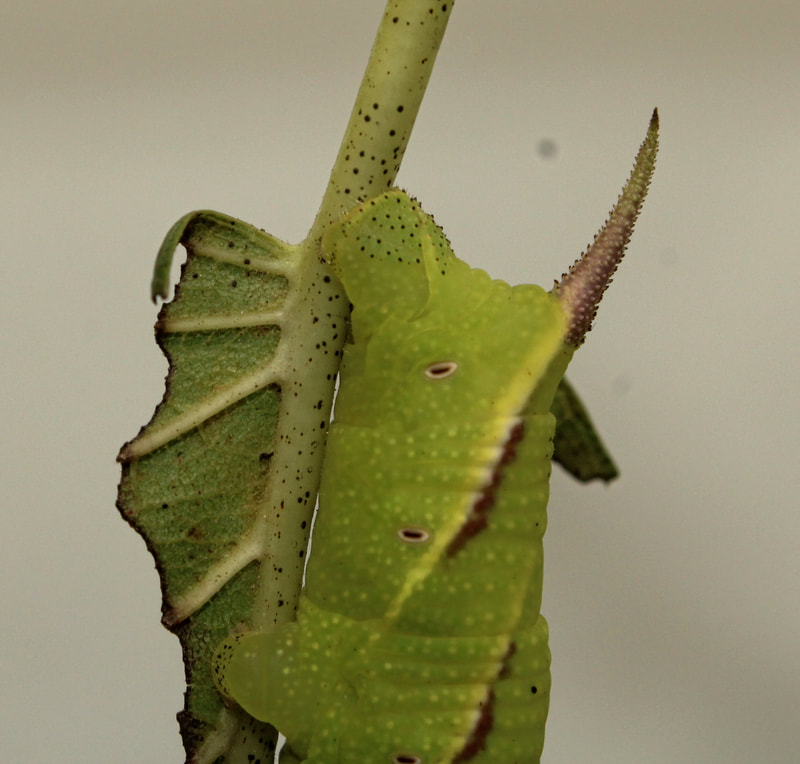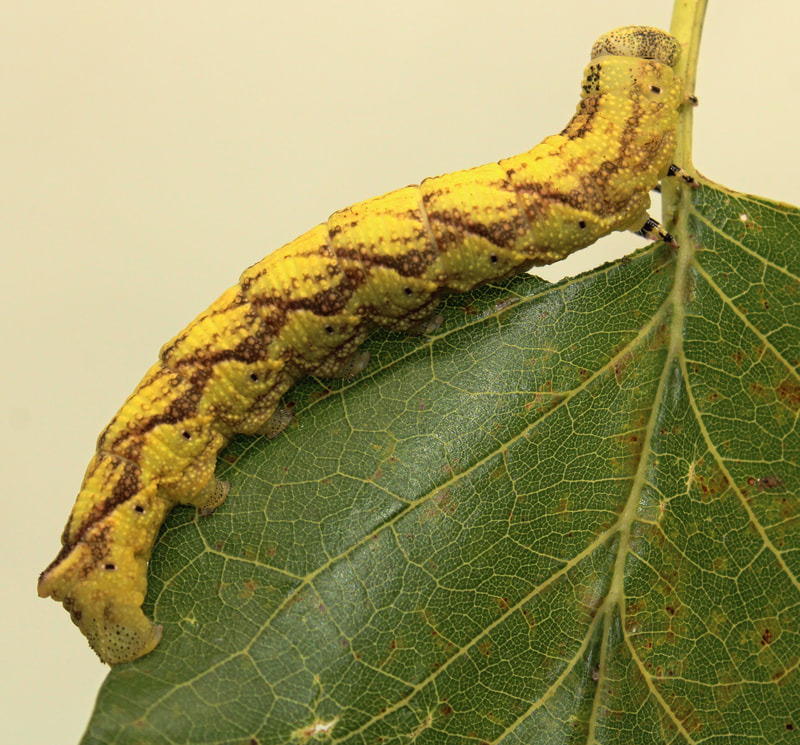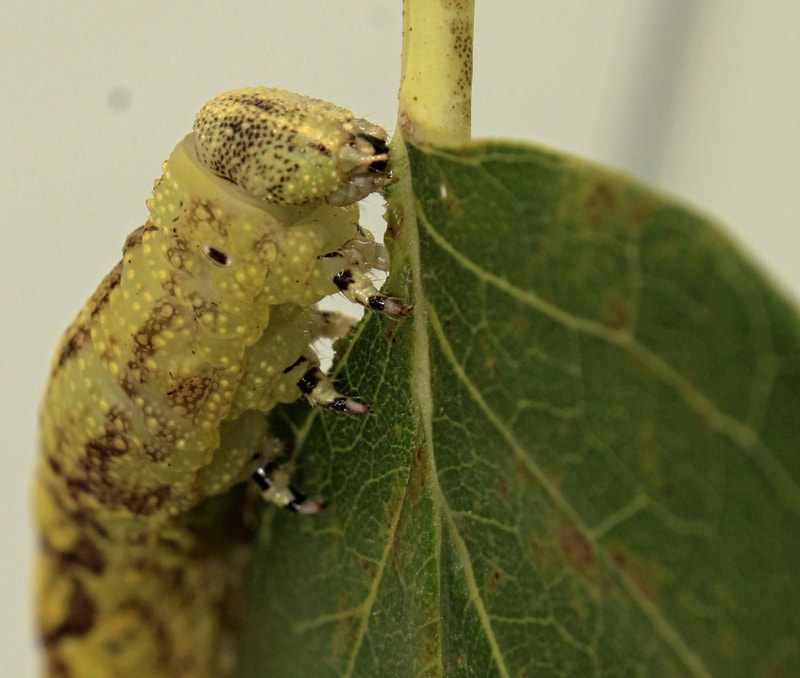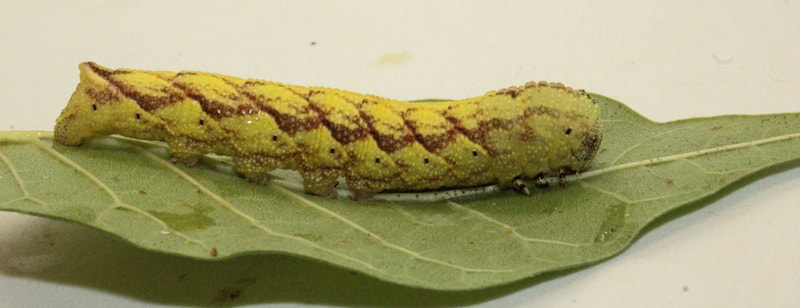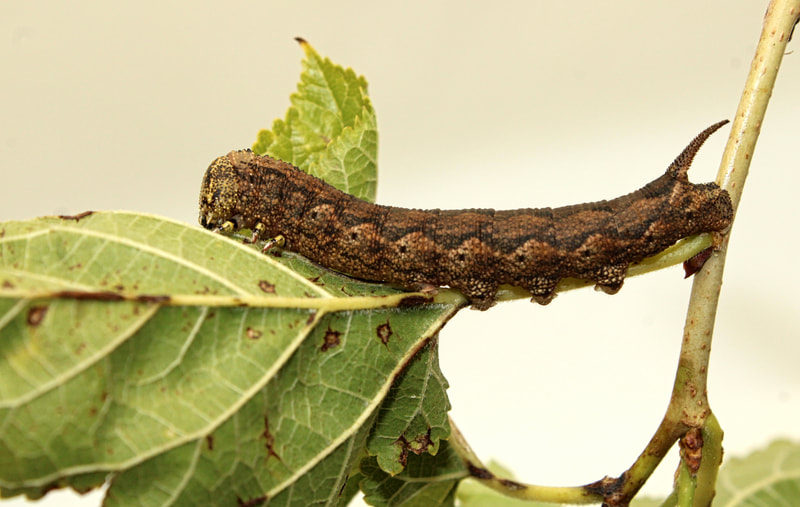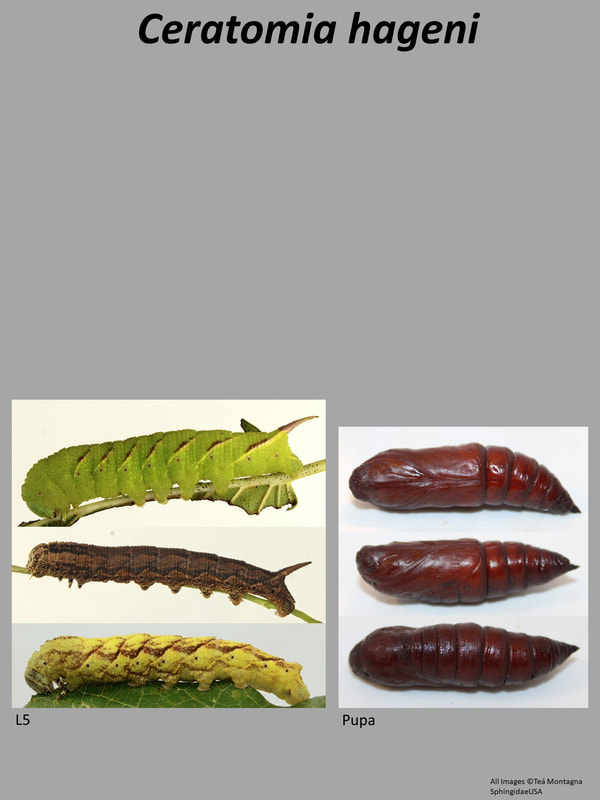|
Common Name: Hagen’s Sphinx; Osage Orange Sphinx
Ecology and Life History: Adults of this species can be found from May through October, flying only in the warmer months. It is unlikely that any region would experience continual broods of this species. This moth is attracted to light, but likely not to bait or other methods. Females are larger and rounder than males. Males have a cone shaped abdomen that ends in a point whereas females have a rounder abdomen that ends in a blunt circle. Eggs are laid on hostplants. Larvae feed primarily at night. The larvae will retreat to the tree trunk and hide under bark during the day (2). When disturbed, the larva will fall off the branch and drop to the ground (2). Adults of this species look similar regardless of where they are found geographically. The larvae exhibit at least three unique color morphs (discussed below). Habitat and Searching for Larvae: This moth is a specialist on Maculra pomifera. It has not been shown to eat anything else, including closely related plants. Larvae can be found on most fence-row sized Osage Orange trees. They are frequently encountered in yards, fence-rows, parks, and planted areas where the host is grown. While it has not yet been shown, this larva (particularly the green form) almost certainly fluoresces under UV light. Rearing Notes: This species would likely lay eggs in a paper bag, offering some hostplant may encourage laying. This larva is a specialist on Maculra pomifera and rejected any other plants offered in captivity. Larvae were reared singly in tupperware containers with no problem. I imagine several larvae could be reared together. Like other Ceratomia, they do not like humidity and if being reared in tupperware, need to be aired out daily. Sleeving is likely an excellent way of rearing this species. Pupation was easy using the paper towel method (outlined in the general information tab on SphingidaeUSA) but I have no doubt soil would also work. Host plants: Click here to load this Caspio Cloud Database
Cloud Database by Caspio |
Adult Description: This is a medium sized moth, forewing approximately 40-46mm (2). This species is distinctive with a large white discal spot and some greenish coloration on the forewing. The ground color of this moth is a gray-brown, but the forewing is heavily marked with black, brown and green markings. The green markings are unique to this species in the genus.
Larval Description: L5: This is a very rough looking larva, but it is not granulated. There is a white caudal horn that is quite rough. Occasionally the ground color of the larva bleeds into the horn turning it purple-white or brownish. The granules are quite clear on the horn. The ground color of the larva can vary from green to brown-yellow or brown and it has 7 abdominal streaks. In the green form, these streaks are white and bordered by purple. In the brown and brown-yellow forms, the stripes may be hardly visible, matching the ground color of the larva. The patterning near the stripes may include more of a zig-zag, particularly near the dorsal region. The streaks are present upon close examination. |
The gallery to the left contains photos of Ceratomia hageni adults. If you have a photo that you would like to submit to us, please contact us.
The gallery to the right contains photos of Ceratomia hageni larval and pupal stages. If you have a photo that you would like to submit to us, please contact us.
The gallery to the right contains photos of Ceratomia hageni larval and pupal stages. If you have a photo that you would like to submit to us, please contact us.
|
|
